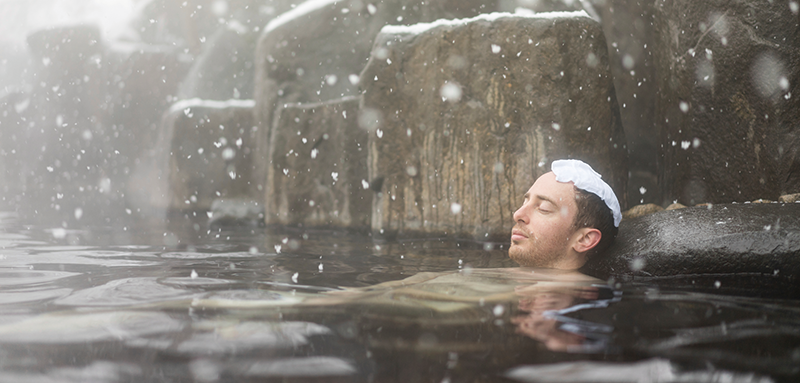By Matt Klampert
The area of YUKIGUNI, particularly around the Shinano River in what is now the town of Tsunan, is blessed with a breathtaking and relatively undisturbed natural landscape. Due to its abundant natural resources, it was once home to an early hunter-gatherer culture, which depended on Tsunan’s clear waters and dense forests for its survival. This primitive society was a part of what is now collectively referred to as “Jomon.” The Jomon people lived in many small nation-states spread from Kyushu to Hokkaido, where they thrived for thousands of years. These days, the significance of Jomon and Jomon culture to modern Japan is gradually achieving more recognition. They are now known for, among other things, a type of earthenware pottery known as “Kaengata,” which are a fascinating and uniquely Japanese art form.
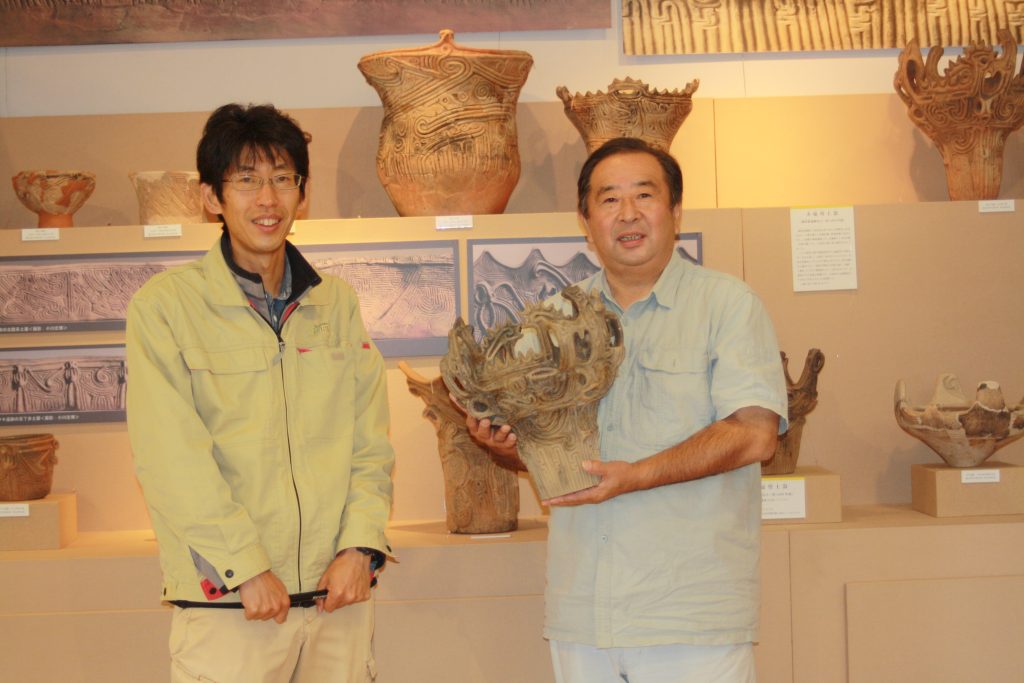
Jomon: A brief history
Let’s talk for a minute about who the Jomon were. They lived back 14,000 years ago and constituted what is now considered to be the first Japanese society. Unlike later civilizations which revolved around agriculture and permanent settlements, the Jomon were typically hunter-gatherers. It is thought that they subsisted on fish, and foraged for vegetation and foodstuffs such as edible nuts and non-poisonous mushrooms. They didn’t cultivate rice, or raise livestock, so they could only really thrive in areas where food was already in abundance. “The distinction we have to make is that they didn’t try to tame or control nature, but instead used what was already there,” said Masaichi Sato, an archaeologist and the Head of the Geopark Promotion Office in Tsunan. “By co-existing with nature for so long, the Jomon people were in touch with the natural world around them. And so they developed a knack, for example, for being able to tell when climate changes would occur.”
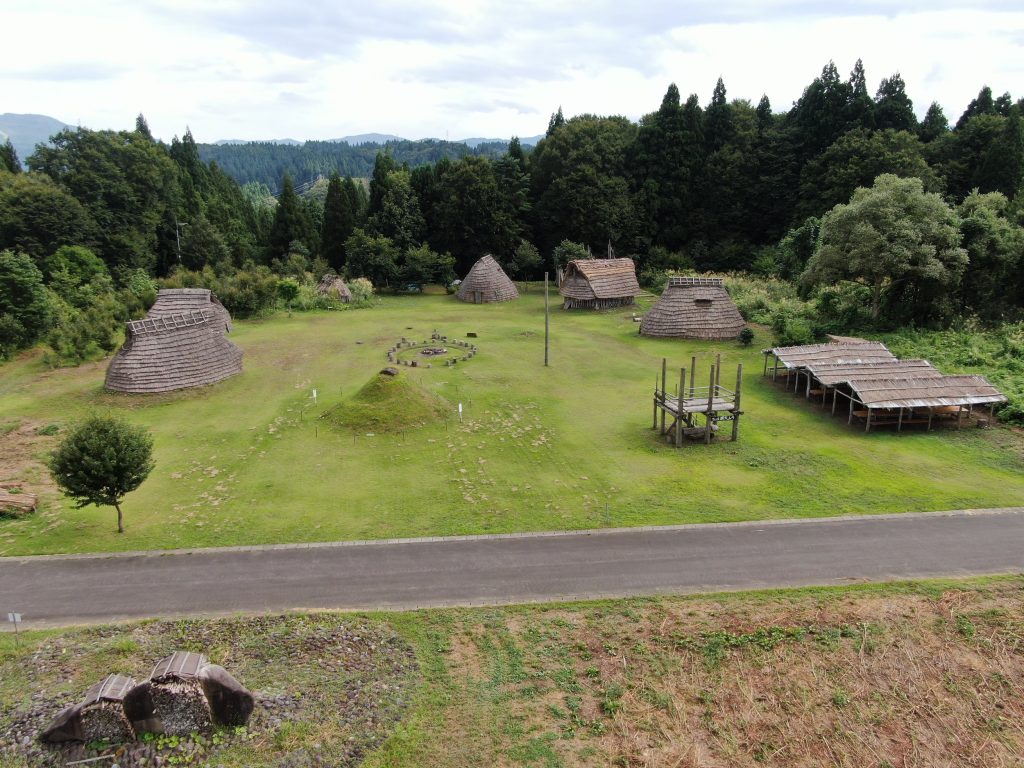
The end of the Jomon
However, surviving the cold Niigata winters proved to be a tall order. “Even if you go further north, it doesn’t snow as much as here,” Sato said. Living in an area that got up to three meters of snowfall, they had to prepare for this eventuality for much of the year to have any hope of survival. Similar to Inuit cultures in the Arctic, the Jomon had many different words for snow, making use of onomatopoeia like zarameyuki (granular or course snow) or botanyuki (large, fluffy snow). It has actually been suggested that Jomon were the first people to use onomatopoeia. While the industrious Jomon thrived at first, the ever-harsher winters proved more and more difficult.
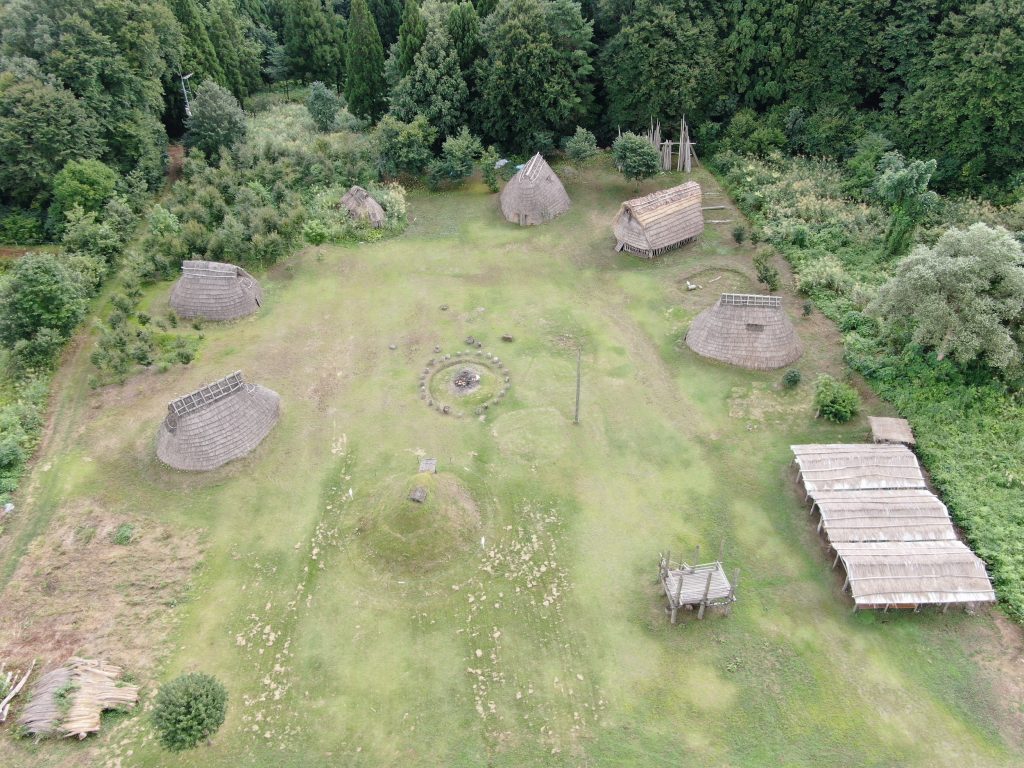
This was compounded by arrivals on the island of Kyushu from continental Asia. Having a complex and structured society, and more importantly, metal weaponry, these more advanced peoples devastated the Jomon groups in a series of wars over a period of approximately two centuries. After that time, these “new Japanese,” later known as Yayoi, would become the dominant force in Japan, while the Jomon dwindled before dying out around 300 BC. The rise of farming during the Yayoi period led to people gradually forming cities and social stratification. Mr. Sato made the point that “agricultural society helps creates hierarchy,” stating “When you introduce crop irrigation, this allows for the creation of more populated areas, which in turn allowed for a more complex social structure and, for example, the existence of slavery. Without these things, Jomon people worked together in a society that, while containing different social roles, was undeniably more egalitarian.”
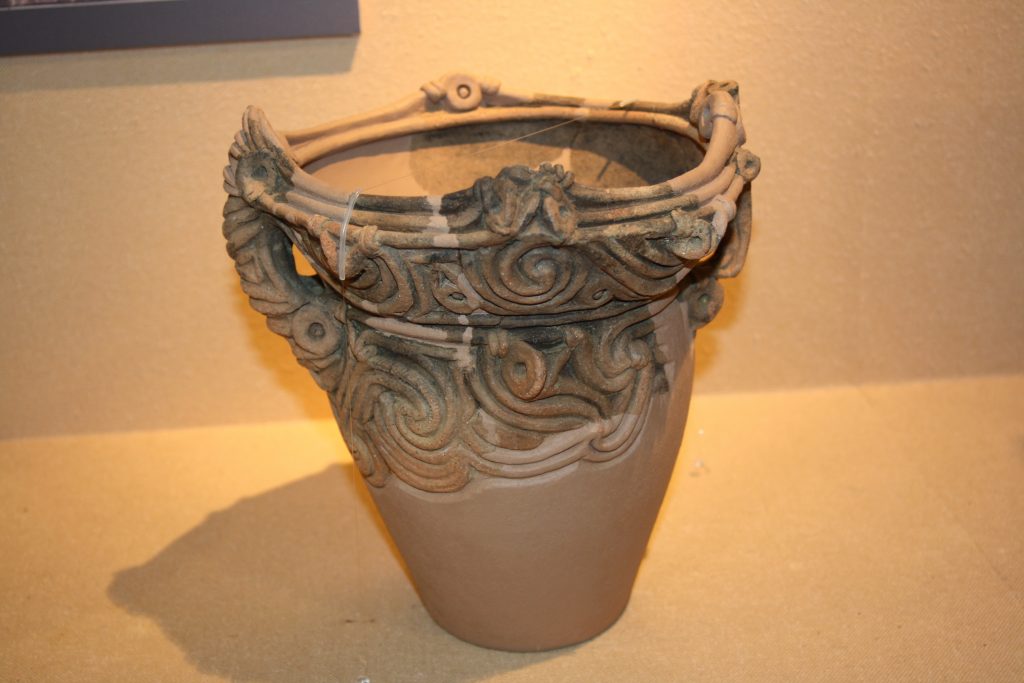
Jomon and their art
Lest you think that the Jomon were simply scraping by for thousands of years, what we have learned about them points to a vibrant and imaginative culture. This is most readily apparent in their artwork: most famously the aforementioned Kaengata pottery. So, what is “Kaengata”? First of all, the name translates to something along the lines of “fire pots” or “flameware.” However, this name itself is only conjecture, as we have little evidence to support the significance of any sort of fire imagery. On the other hand, it has been asserted that the wavy designs on the tops of Kaengata pots may instead represent water. The first Kaengata pots have been commonly dated from the middle period of the Jomon era, approximately 5,000 years ago. What separates this pottery from other known ancient pottery created by primitive cultures is the fact that although they were likely used in daily life, their design was far from utilitarian. For example, the rims of the pottery have a sort of jaggy and asymmetrical design, and are rather large and bulky. On these flame pots are numerous abstract patterns, which have captured the imagination of artists and art-lovers alike.
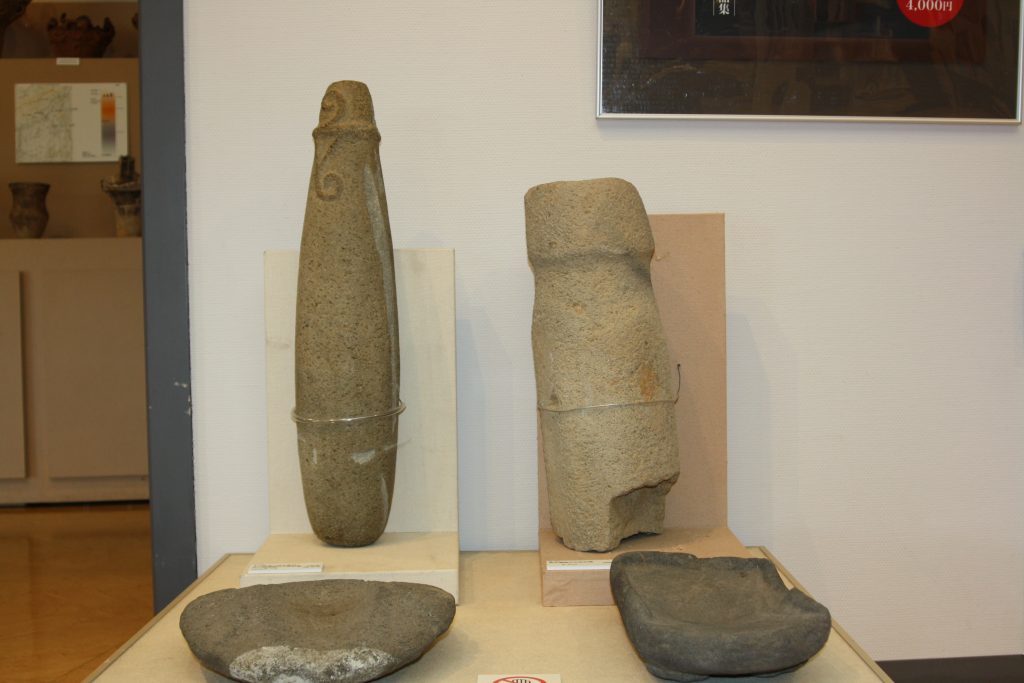
Historians also have some idea of just how these Kaengata pots were used in Jomon society. Like any pot, they were likely used to store things, such as food. Though we have stated that the Jomon were not farmers per se, there is evidence to indicate that Jomon people may have understand the significance of seeds, as they have been found inside Kaengata, although we don’t know precisely why. It also seems that Kaengata had a ceremonial significance. While the Jomon people are not thought to have had an organized religion as we now understand them, they likely had animistic beliefs, such as a belief of inanimate objects containing a spirit, and the idea of man (and god) being a part of nature, and not separate from it. It is important to note that Jomon culture predates the introduction of Buddhism from China, as well as the development of Shinto within Japan. In addition to their significance in daily life, it is very likely that Kaengata pots were also exchanged as gifts, or a very early form of the omiyage that is now ubiquitous with Japanese culture. This is because Kaengata pots have been found not only in YUKIGUNI, but all over the country.
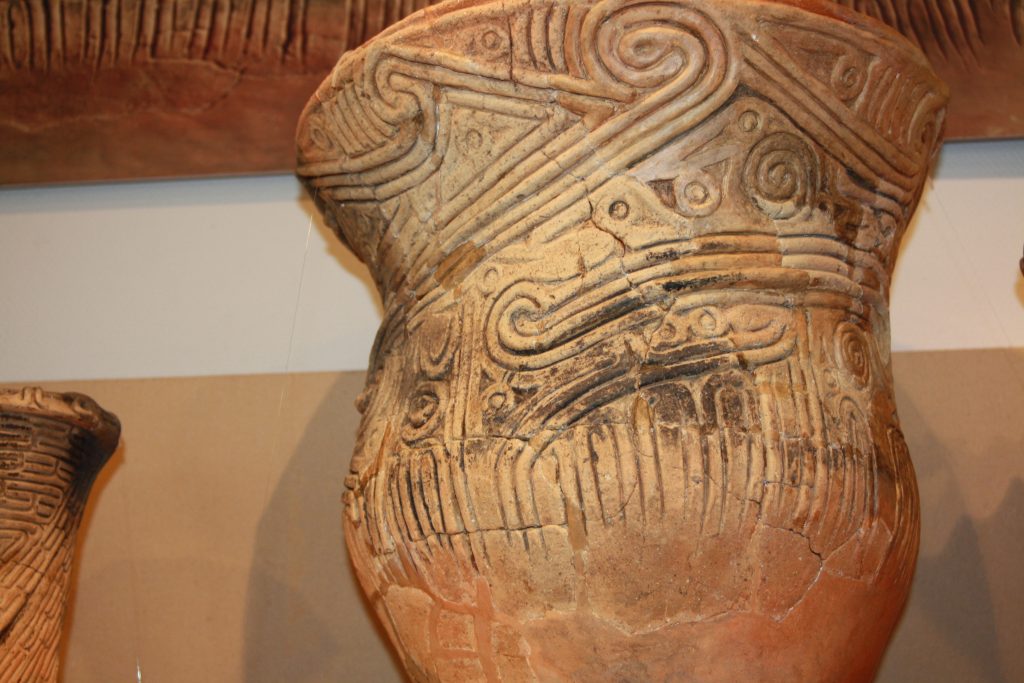
The imagination of the Jomon
The abstract spiral patterns on display brings up another unique aspect of Japanese Kaengata. Most primitive artwork tended to be quite literal: the artist simply depicted what they saw in their daily lives, such as in the famous cave paintings in Lascaux. This is also true of later Yayoi art, which has in turn inspired what has been thought of as “traditional Japanese” art since then. Typical Japanese sensibilities, as reflected in their artwork, usually tended toward symmetry and harmony.
However, this is not true of Jomon artists, quite simply because the subjects of their work do not exist as such in our world. Kaengata are typified by their spiral patterns, which can be interpreted as the cycle of life and death, and possibly rebirth. Interestingly enough, as Jomon culture evolved over the centuries these patterns gradually became more complex. The designs have been likened to tribal tattoos, whose purpose was to ward off demons. It is quite possible that these sort of jagged designs not only adorned the outsides of Kaengata pottery, but Jomon people as well.
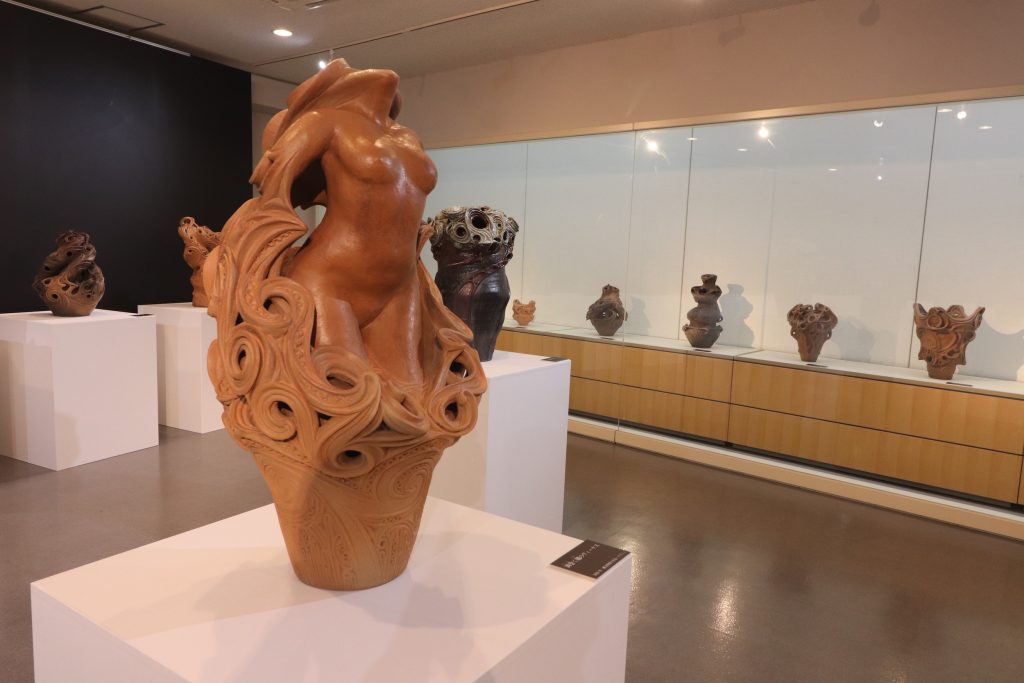
Yukiguni and Kaengata in the present day
It is interesting to see how art has evolved in the YUKIGUNI region. These days, we have the Echigo-Tsumari Art Triennale, one of the pre-eminent art festivals in the country. A prominent theme of Echigo-Tsumari is the connection between people and nature. Like the ancient exchange of Kaengata, the “art fields” are collaborations not only with local artists, but creatives across the entire country, as well as from abroad.
There are also modern-day artists that have drawn on Jomon art specifically for inspiration. One of the most celebrated postwar artists in Japan is Taro Okamoto. Okamoto was the one who popularized Kaengata as actual art in the 1950s and 1960s, and not just a mere archeological curiosity. Okamoto attempted to copy these patterns in his own work before expanding on them, creating works such as “Face,” “Warrior” and “Jomon Man.” As a result we now have Jomon exhibits in museums, and museums dedicated entirely to Jomon, such as Najomon Museum in Tsunan.
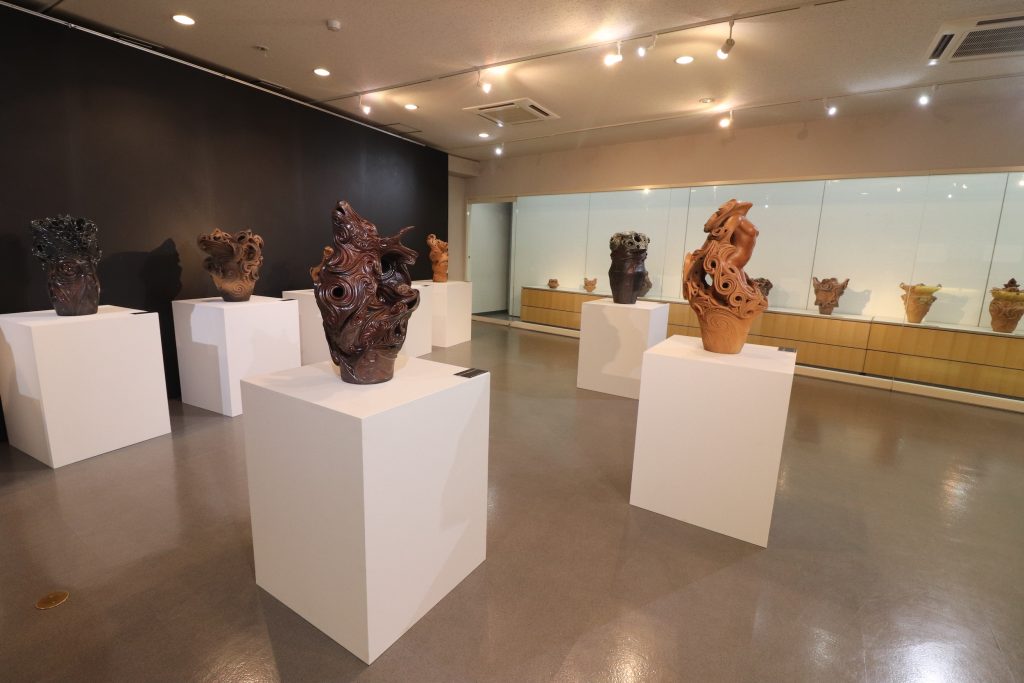
Aside from the aforementioned Taro Okamoto, contemporary artists such as Genya Murakami, an artist from Hokkaido, drew directly on Jomon for inspiration. Murakami exhibited his works at such places as the Ifurai Museum in Okayama, Tsunan’s own Najomon Museum, and even at seminars abroad in the United States, before his untimely death in 2020. His work replicated the same ancient methods of hand-making Kaengata, down to firing the pots in an outdoor bonfire.
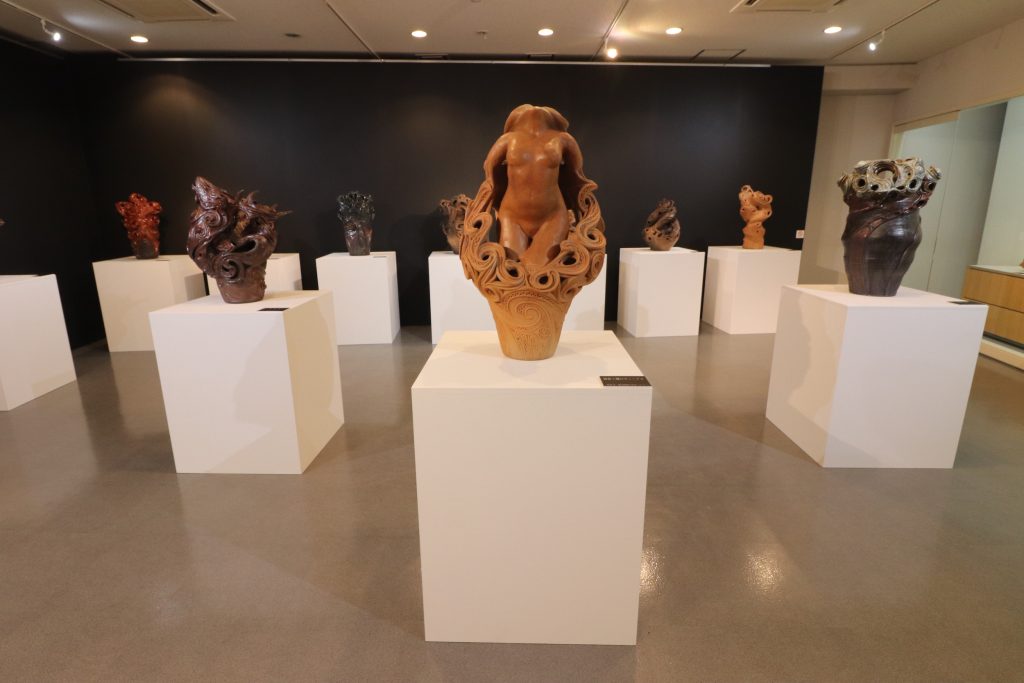
There is still much to learn about Jomon. Mr. Sato himself believes learning about Jomon is very much related to the present day, especially as the consequences of global warming become more and more clear. So, what can we learn from Jomon? Most of all, it is the need to rethink our lives in relation to our environment, especially life in the countryside, and the necessity of living as one with nature.
At the heart of the diversity of Japanese culture lies, in fact, a single cultural source. This is the topic of the Jomon culture, which after a long time has once again become an enigmatic and fascinating place.
Do You Know About The Jomon Culture Hidden Deep In The Heart Of Japanese Culture?
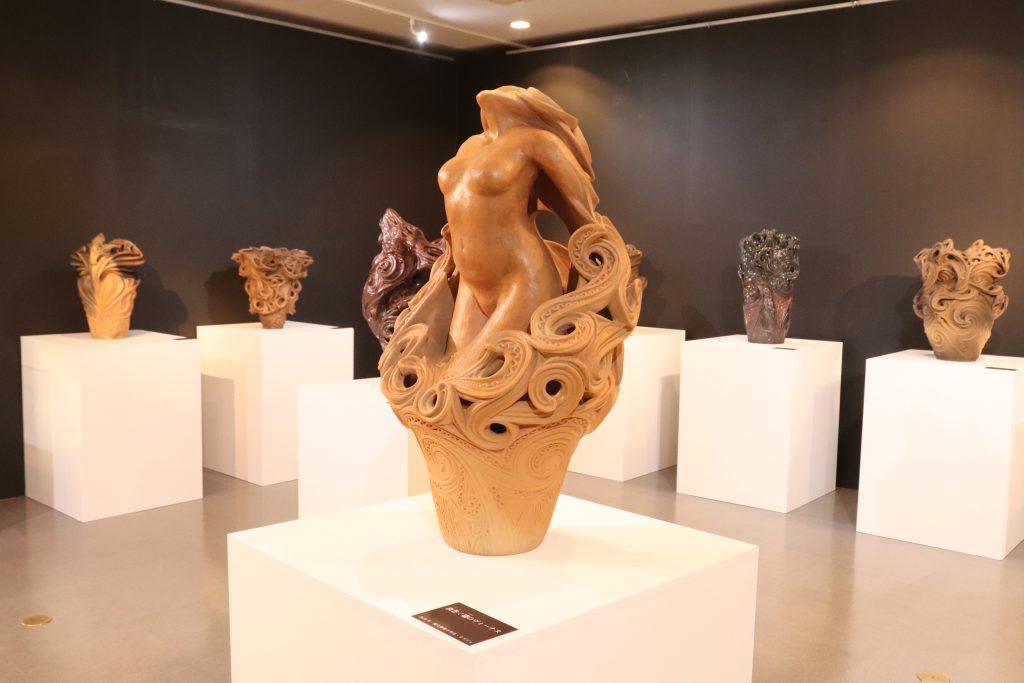
Information for Travelers
Najomon Museum
Address: 835 Shimofunatootsu, Tsunan Town, Nakauonuma District, Niigata Prefecture 949-8201
Hours: Open 9:00 a.m. to 5:00 p.m., closed Mondays
Tourism Tsunan
Tsunan Town Tourism Area Development Department DMO Promotion Office
585 Shimofunatobo, Tsunan, Nakauonuma, Niigata prefecture, 〒949-8292
Echigo Tsumari Art Field
Address: 3743-1 Matsudai, Tokamachi City, Niigata Prefecture 942-1526
Hours: Open 9:00 a.m. to 6:00 p.m., closed Wednesdays
Ifurai Museum
Address: 609 Hoso, Niimi Town, Okayama Prefecture 719-2552
Hours: Open 9:30 a.m. to 5:00 p.m., closed Mondays

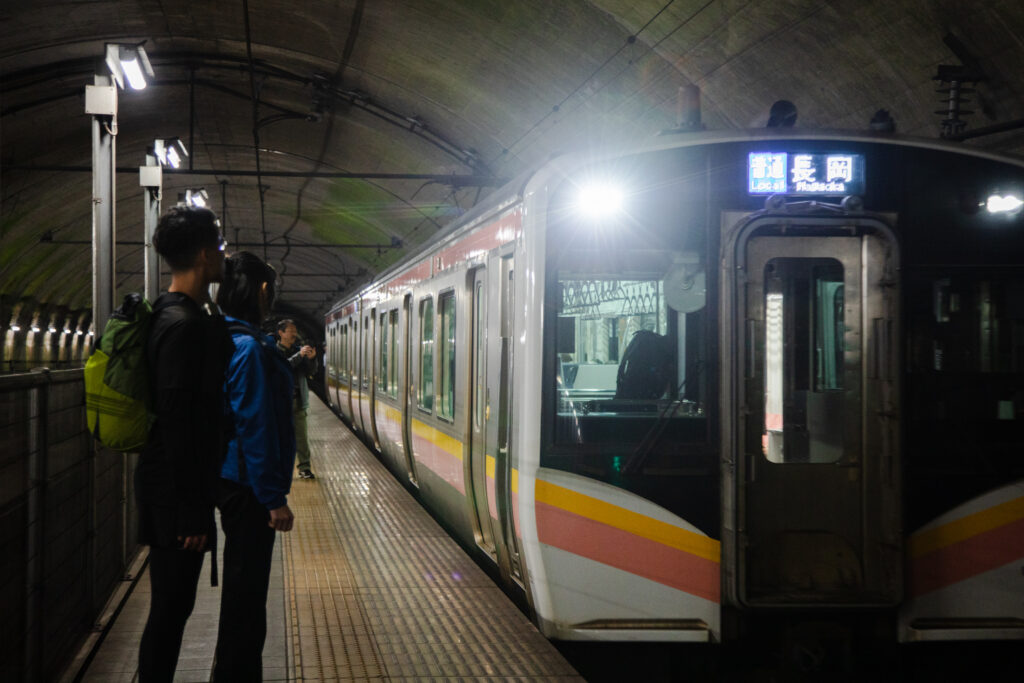
-1024x626-2.jpg)
